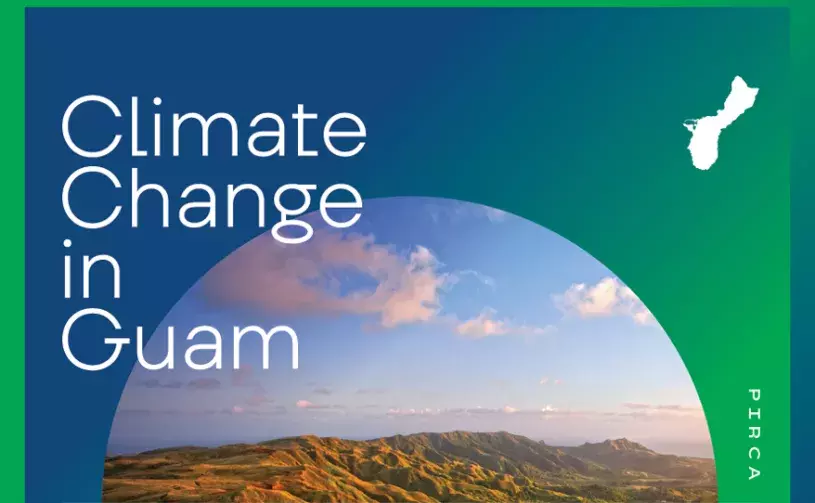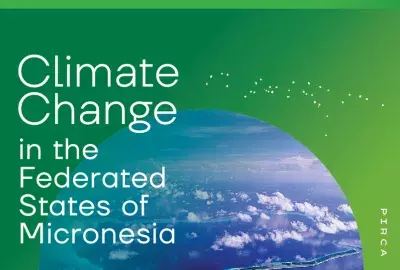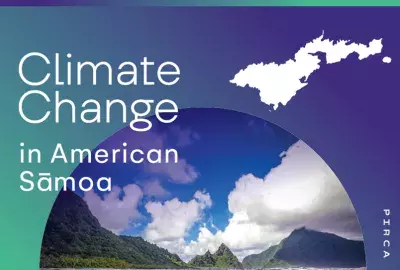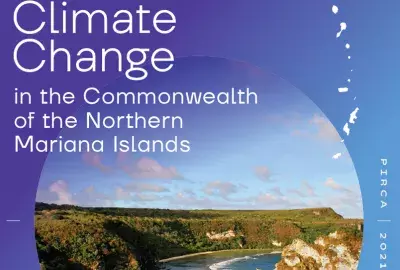Error message

Hotter weather, risks to freshwater supplies, coral reef death, and stronger typhoons are among the major challenges detailed in a new report on climate change in Guam. Threatened resources include high-value coastal infrastructure and the millions of dollars that ocean ecosystems add to Guam’s economy annually, according to the report by the Pacific Islands Regional Climate Assessment (PIRCA), a consortium of several government, NGO, and research entities.
Climate Change in Guam: Indicators and Considerations for Key Sectors is one in a series of new PIRCA reports aimed at assessing the state of knowledge about climate change indicators, impacts, and adaptive capacity of the US-Affiliated Pacific Islands and the Hawaiian archipelago. Authors from the University of Guam and the East-West Center—along with more than 30 technical contributors from local governments, NGOs, researchers, and community groups—collaboratively developed the Guam PIRCA report.
Key climate change issues affecting Guam include threats to human health, risks to freshwater resources, increasing wildfire, and the potential for damage to infrastructure caused by future sea level rise and stronger typhoons. Climate change is expected to disrupt many aspects of life in Guam. Those who are already vulnerable are harmed more than others by extreme weather and climate shifts. Climate Change in Guam: Indicators and Considerations for Key Sectors provides guidance for decision-makers seeking to better understand how climate variability and change impact Guam and its communities. This assessment also identifies needs for additional information and research, which if met could support responses that enhance resilience and help Guam to withstand the changes to come.
The East-West Center authors are affiliated with the Pacific RISA—a NOAA RISA team—and the Center’s Research Program.
Hotter weather, risks to freshwater supplies, coral reef death, and stronger typhoons are among the major challenges detailed in a new report on climate change in Guam. Threatened resources include high-value coastal infrastructure and the millions of dollars that ocean ecosystems add to Guam’s economy annually, according to the report by the Pacific Islands Regional Climate Assessment (PIRCA), a consortium of several government, NGO, and research entities.
Climate Change in Guam: Indicators and Considerations for Key Sectors is one in a series of new PIRCA reports aimed at assessing the state of knowledge about climate change indicators, impacts, and adaptive capacity of the US-Affiliated Pacific Islands and the Hawaiian archipelago. Authors from the University of Guam and the East-West Center—along with more than 30 technical contributors from local governments, NGOs, researchers, and community groups—collaboratively developed the Guam PIRCA report.
Key climate change issues affecting Guam include threats to human health, risks to freshwater resources, increasing wildfire, and the potential for damage to infrastructure caused by future sea level rise and stronger typhoons. Climate change is expected to disrupt many aspects of life in Guam. Those who are already vulnerable are harmed more than others by extreme weather and climate shifts. Climate Change in Guam: Indicators and Considerations for Key Sectors provides guidance for decision-makers seeking to better understand how climate variability and change impact Guam and its communities. This assessment also identifies needs for additional information and research, which if met could support responses that enhance resilience and help Guam to withstand the changes to come.
The East-West Center authors are affiliated with the Pacific RISA—a NOAA RISA team—and the Center’s Research Program.







